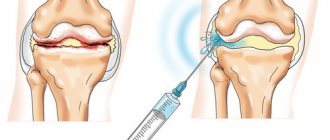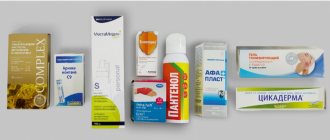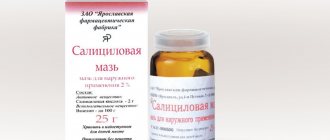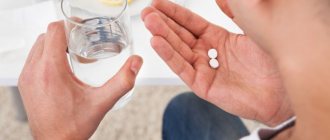Pain caused by degenerative processes in the joints causes a person considerable discomfort. One of the mandatory prescriptions of an orthopedic doctor is non-steroidal anti-inflammatory drugs, which sometimes the patient begins to take at his own discretion in large quantities. What do you need to remember so as not to further harm your health?
Uncontrolled use of NSAIDs is a direct path to exacerbation of gastrointestinal diseases
What are NSAIDs
The purpose of non-hormonal anti-inflammatory drugs is to reduce and eliminate inflammation in the joints. The absence of hormones makes the effect of the medications quite mild and eliminates serious side effects. However, this is only true if the treatment of arthrosis or osteoarthritis is carried out under the supervision of a specialist.
What is the principle of action of non-steroidal anti-inflammatory drugs? How to take them correctly? Experienced doctor, chiropractor Anton Epifanov says:
Types of joint diseases
The most common joint diseases are:
- inflammatory – arthritis (rheumatoid, gouty, psoriatic, infectious, reactive);
- non-inflammatory – arthrosis;
- secondary – against the background of diseases of other organs: systemic lupus erythematosus, scleroderma, polymyositis, Sjögren’s disease, oncology.
Inflammation can affect both individual parts of the joint and its entire structure. Symptoms differ depending on the cause of the lesion, but are united under the general name “articular syndrome.” Patients complain of pain, limitation of movements, and deformation of the damaged area.
The main non-inflammatory disease of the musculoskeletal system is osteoarthritis. By the age of 50-60, almost 85% of the population suffers from its manifestations².
Osteoarthritis damage begins with inflammation in the synovium and ligamentous apparatus. As a result, the process involves all components of the joint. When cartilage is destroyed, the bones become irreversibly deformed at the articular surfaces and lose functionality, which is accompanied by the appearance of chronic pain.
Pain from joint diseases significantly reduces the quality of life. Photo: HayDmitriy / Depositphotos
What non-steroidal anti-inflammatory drugs are most often prescribed for arthrosis?
- Aspirin is indicated in the initial stages of treatment of arthrosis and osteoarthritis, however, patients with diseases of the heart, blood vessels and gastrointestinal tract require special caution.
- Diclofenac - in tablets or ointment form.
- Ibuprofen is one of the most common medications that is easier to tolerate by the body than others.
- Indomethacin - attractive at an affordable price, relieves pain well, but it has many contraindications.
- Ketoprofen - in the form of tablets, injections, ointments, aerosols, gels, suppositories and even a preparation for applications.
- Movalis is less toxic to the gastrointestinal tract than many others, but is contraindicated in patients with diseases of the cardiovascular system.
- Nimesulide – copes with pain and inflammation, and also helps stop the destruction of joints.
- Etoricoxib requires strict adherence to the dosage, otherwise complications from the heart and blood vessels are possible.
There are a lot of drugs in the NSAID group: they must be prescribed by a doctor
Chondroprotectors and vitamins
Chondroprotectors are drugs that are primarily used to treat degenerative-dystrophic diseases of the structures of the musculoskeletal system, affecting cartilage tissue. The drugs can improve the nutrition of cartilage and reduce the intensity of degeneration processes. They are available in tablet dosage form and are intended for oral administration in long courses. Vitamins are indicated for use regardless of the origin and nature of the pathological process, as they can improve metabolic processes in tissues.
What you need to remember when taking an NSAID drug
Medicines in this category have a fairly quick pain-relieving effect, so many patients do not deny themselves an “extra pill.” In fact, this approach is very dangerous, since an overdose is fraught with serious complications. Therefore, doctors strongly recommend:
- take such medications only as prescribed by a doctor and in the dosage indicated by him;
- do not combine the use of several drugs from this group at once;
- take medications only with water, since tea, coffee, juice or milk distort the effect of the drug;
- do not self-medicate.
Simultaneous use of non-steroidal drugs and alcohol is incompatible and life-threatening
Treatment with anti-inflammatory drugs alone is ineffective. This is only part of complex therapy for age-related or post-traumatic arthrosis. To restore joint mobility, it is necessary to undergo a course of intra-articular injections, for example, Noltrex, to eliminate the deficiency of synovial fluid in the joint capsule and stop painful friction of cartilage. In some cases, long-term use of chondroprotectors, physiotherapy and other therapeutic methods are indicated. Only an integrated approach will bring results.
Release form of drugs for osteoarthritis
A wide range of medications are used to treat arthrosis - the patient can choose the form of release that best fits his lifestyle.
Tablets and capsules
Systemic oral medications are easy to use, easy to dose, and are suitable for the treatment of polyarthrosis that affects several joints at once. Most drugs for osteoarthritis in tablets are highly accessible to the body - up to 90% of the active substances are absorbed.
Tablets, capsules and powders are prescribed for routine treatment in courses 2-3 times a year. If remission is not interspersed with acute exacerbations that require urgent relief, the patient can manage osteoarthritis treatment with oral medications for years.
The main disadvantages of oral medications are that:
- they do not give an intense effect on the affected joint, but are carried with the blood throughout the body (i.e., they reach the cartilage provided that the periarticular tissues are well trophic);
- Even from the best drugs for the treatment of arthrosis, which are taken in courses, you should not expect an immediate effect;
- some tablets (for example, non-steroidal anti-inflammatory drugs) negatively affect the mucous membranes of the digestive system;
- Excipients of some drugs may cause individual intolerance.
Powders (in sachet)
Treatment of osteoarthritis with drugs in sachets also allows the patient to do without visiting medical institutions - unlike injections, powders are suitable for autonomous use. It is enough to dilute one dose in ½ glass of water. Compared to other oral medications, powders have a number of advantages:
- fine powders are absorbed faster and better by the body (up to 90%);
- The sachet is easy to dose and take with you - only 1 sachet per day, without blisters or jars;
- contain a minimum amount of preservatives and excipients.
Unlike tablets, powder preparations for the treatment of arthrosis of the joints can be purchased in exactly the same quantity as one course. And even if there is an excess left, it’s not scary, medicines in sachets are stored 1.5-2 times longer than tablets.
Some sachets (like the chondroprotector Artracam) contain auxiliary components - for example, vitamin C for long-term storage of the medicine and protection of joints from oxidative damage.
Injections
Compared to oral drugs for osteoarthritis, injectable drugs have a number of significant advantages:
- do not damage mucous membranes and do not affect the functioning of internal organs;
- have a longer period of elimination from the body, which means they work 2-4 times longer;
- Most injections are given every few days, while tablets are taken 1-2 times every day.
When administered into a joint or periarticular area, drugs for the treatment of arthrosis in injections:
- act immediately or within several hours after administration;
- the active ingredients are completely absorbed and reach the diseased joint.
For intra-articular administration
Preparations for intra-articular administration can be divided into medicinal cocktails, or blockades (analgesic + anti-inflammatory drugs for arthrosis + vitamins and reparants) and joint fluid prostheses. The first are aimed at instantly relieving pain and delivering nutrients to strengthen cartilage tissue directly into the joint. And the latter are shown in order to improve the sliding and shock-absorbing characteristics of cartilage. Treatment of osteoarthritis with drugs containing hyaluron can reduce the destructive load on the joint, thereby relieving inflammation and swelling. Synovial fluid grafts significantly slow the progression of the disease, delaying loss of mobility, disability and surgery, even in severe cases. When administered intra-articularly, the artificial “lubricant” can remain in the joint and directly affect its entire tissue for up to 12 months!
The duration of the blockade depends on the location of the disease and the individual characteristics of the body - on average, from 10 to 21 days.
But such drugs for joint arthrosis also have disadvantages:
- with frequent intra-articular administration, blockades with glucocorticoid and other drugs can cause destruction of cartilage tissue;
- not suitable for small and deep-lying joints - optimal primarily for knee, intervertebral, and shoulder joints.
- there is a risk of injection into the joint;
- The injection must be performed by a highly qualified specialist.
For intramuscular and intravenous administration
Treatment of osteoarthritis with drugs for intramuscular and intravenous administration is carried out infrequently, as a rule, as an emergency aid during an exacerbation of the disease or if the tablets are ineffective. As with oral medications, they enter the bloodstream and can affect the functioning of individual organs, so if you have severe concomitant diseases, it is better to opt for intra-articular injections.
Administration of the drug for the treatment of arthrosis in injections into a muscle or vein:
- less traumatic than intra-articular;
- suitable for the treatment of small and deep joints that are inaccessible for direct injection (for example, interphalangeal joints);
- has a minimal risk of complications (including infectious) at the injection site;
- You can do it yourself or seek the help of any medical professional.
For severe joint pain, your doctor may prescribe opioid analgesics intramuscularly and intravenously, such as tramadol. To relieve inflammation - glucocorticoids. Some chondroprotectors (chondroitin sulfate, alflutop) are also produced in the form of such injections.
Ointments, creams and gels
Preparations for joint arthrosis for external use are ideal as prophylaxis or adjuvant therapy, especially in the early stages of the disease. Since the active components of drugs for the treatment of arthrosis - ointments, balms and gels - must overcome the epidermal barrier (protective barrier of the skin), at best, 5% of the therapeutic substance gets into the joint. Therefore, external agents are used primarily to improve blood microcirculation, relieve discomfort or mild pain. They demonstrate particular effectiveness on joints poorly protected by soft tissues - knee, shoulder, elbow, interphalangeal and intervertebral joints of the lumbosacral region.
Most drugs - ointments for the treatment of arthrosis - can be used without limitation, about 6 times a day, combining them with massage of the affected area. However, you should be careful with drugs based on snake and bee venom, which can cause allergies and have a number of contraindications.
Solutions for compresses
Compresses are another type of complementary treatment for osteoarthritis with drugs, which are carried out to relieve inflammation and swelling, improve muscle tone and supply beneficial microelements to the joint.
Solutions for compresses have greater bioavailability than ointments, but are not as convenient to use (they require 15 minutes of rest and warmth). The most effective liquid preparations for joint arthrosis are based on bischofite, dimexide, heparin (they can be mixed together for the procedure).




![Rice. 2. Relationship between dose of diclofenac (D), naproxen (Nap) and etoricoxib (Eto) and effect size in osteoarthritis [3]](https://ms-pi.ru/wp-content/uploads/ris-2-zavisimost-mezhdu-dozoj-diklofenaka-d-naproksena-nap-i-330x140.jpg)


